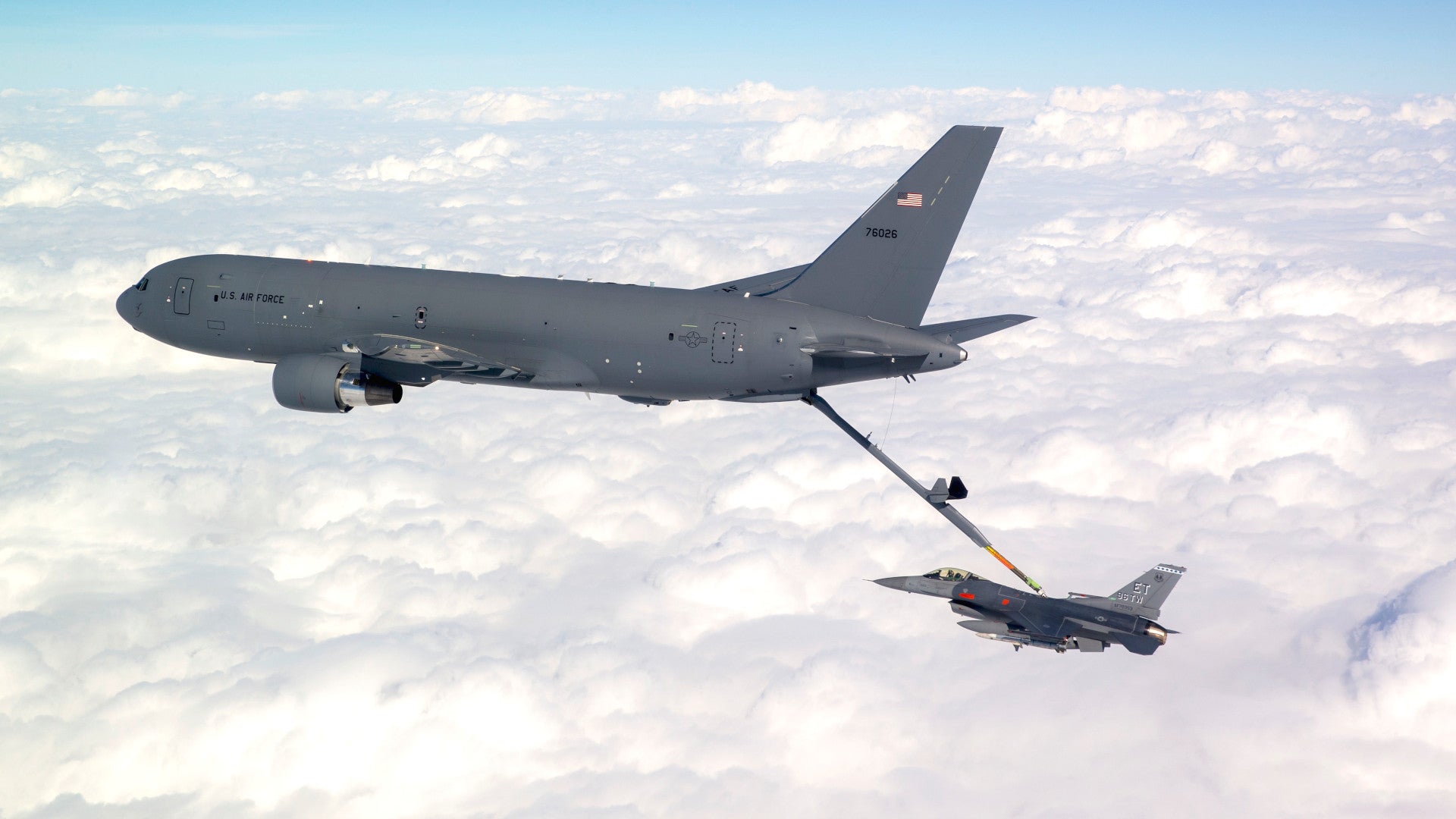The U.S. Air Force says that it is not sold on Boeing’s proposal for how to fix the troublesome Remote Vision System, or RVS, which boom operators on the service’s new KC-46A Pegasus tankers use to safely guide the aircraft’s refueling boom into receiving aircraft. The difficulties with the existing RVS presently preclude the KC-46As from taking part in combat operations overseas and top U.S. military officials are warning that there may soon be a worrying shortfall in available tankers, as other types get retired. That reality is now is driving renewed consideration of a plan to hire private contractors to provide aerial refueling services in various non-combat settings.
On Jan. 31, 2020, Aerospace Daily was first to report the news that the Air Force had balked at Boeing’s plan to overhaul the RVS. In January 2019, the Chicago-headquartered plane maker agreed to develop a new version of the system, incorporating both software and hardware changes, and pay for that work entirely out of pocket. At that time, the company estimated it would take between three and four years just to complete the development of these improvements, which would then still need to be integrated into existing aircraft. As of December 2019, the Air Force had taken delivery of 30 KC-46As already.
“The tanker is not capable of all of its missions and won’t be until the problems with the Remote Vision System are fixed,” U.S. Air Force Lieutenant General Jon Thomas, the Deputy Commander of Air Mobility Command, who also disclosed that the service was not happy with the proposed RVS plan, told Aerospace Daily. “It’s really hard for us to consider the KC-46 part of our operational capacity.”
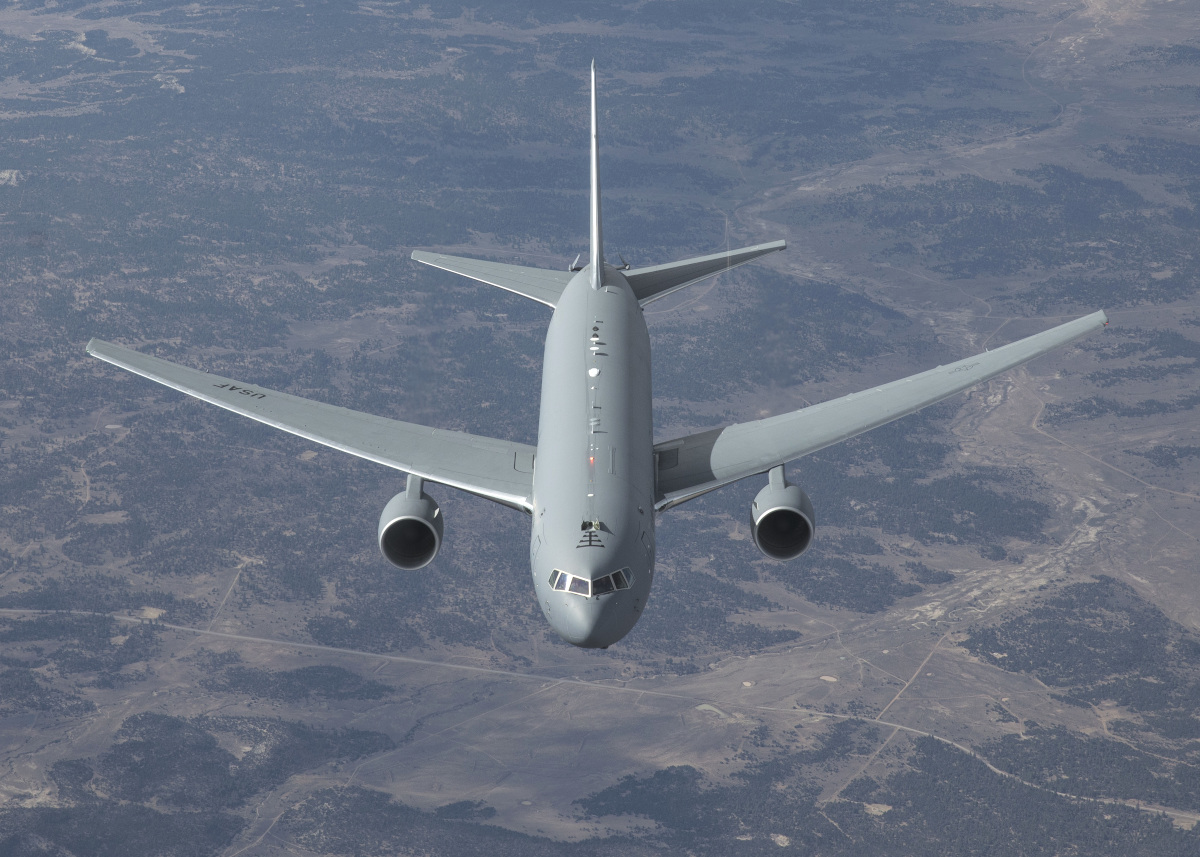
A working remote vision system is absolutely central to the KC-46A’s ability to perform its core aerial refueling mission. Unlike previous Air Force tankers, where the boom operator was actually situated in the rear of the aircraft and could directly see the relationship between the boom and the receiving aircraft, these same personnel on the new KC-46As sit in the aircraft’s main cabin.
The present remote vision system fuses video feeds from a number of cameras positioned at the rear of the KC-46A and presents that view to the boom operator on a set of screens at their workstation. The video stream is presented in a hybrid 2D/3D format and operators wear special glasses to get the full 3D effect. You can read more about the system and how it is supposed to work in this previous War Zone piece.
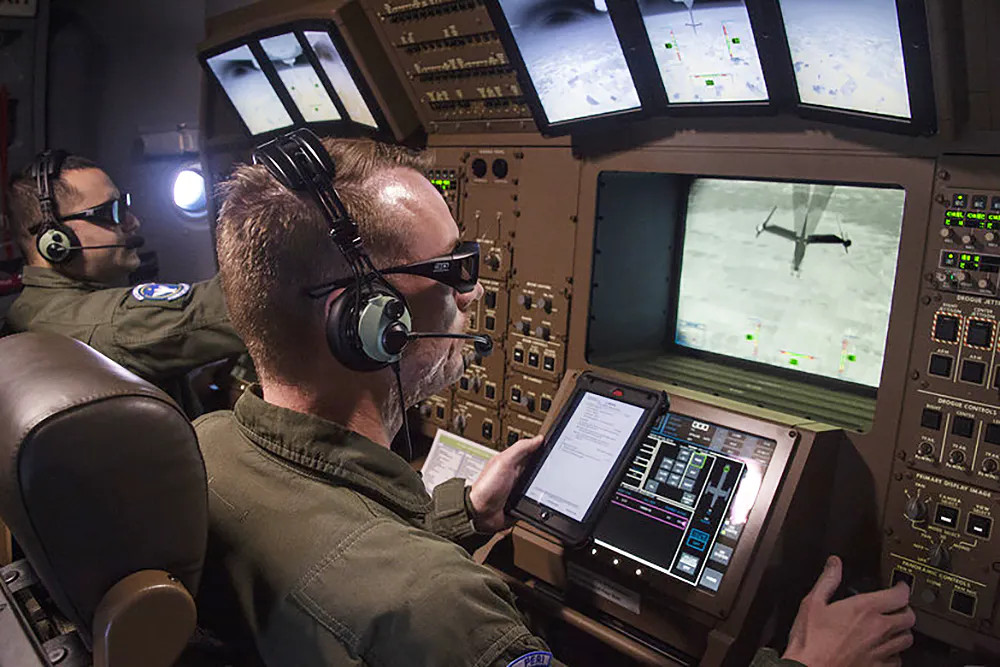
Unfortunately, in testing, evaluation, and general training sorties, it has become apparent that various environmental factors, such as shadows and glare, make it difficult for boom operators to get a proper sense of what is actually happening at the back of the aircraft. This raises the risk of the KC-46A’s boom inadvertently striking receiving aircraft. These incidents are dangerous for both parties and could lead to aborted missions due to any resulting damage, especially to the sensitive skins and coatings that modern stealth combat aircraft rely on to keep as concealed as possible from enemy radars. There are also concerns that operators may suffer from eye strain, headaches, vertigo, and other vision issues after prolonged use of the system.
Beyond the RVS, the KC-46A has also been plagued by other issues, including those tied to an increase in the force necessary to connect with receiving aircraft compared to previous Air Force tankers, which can also lead to boom strikes. Boeing has reportedly solved one critical issue involving cargo latches unlocking unexpectedly in flight, which also presented a serious hazard for KC-46As performing their secondary, but still important cargo and passenger carrying missions.
“We require your attention and improved focus on the KC-46,” U.S. Air Force Chief of Staff General David Goldfein wrote in a letter to Boeing earlier this month, Bloomberg recently reported. “The Air Force continues to accept deliveries of a tanker incapable of performing its primary operational mission.”
This all might not necessarily be as much of an issue if the KC-46A program wasn’t years behind schedule already, a saga you can read about in greater depth in this past War Zone story. The Air Force is still planning to begin retire its oldest KC-135R Stratotankers, which the Pegasuses are supposed to replace. At that same time, the service is looking at cutting other legacy aircraft, such as the relatively small KC-10 tanker fleet, to help free up funding for various other priorities.
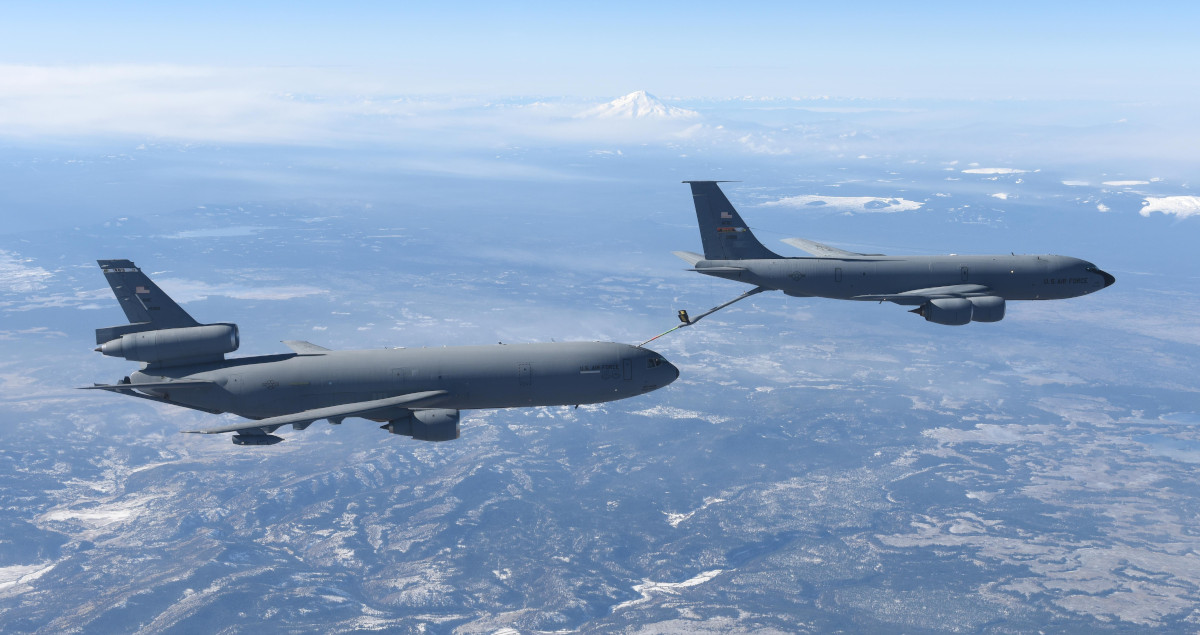
“We’ve got to figure out a way to mitigate the delayed fielding of the KC-46,” U.S. Army General Stephen Lyons, the present head of U.S. Transportation Command, said at a gathering at the Atlantic Council think tank in Washington on Jan. 28, 2019 “That delay is built-in, and the Air Force had already planned on the retirement of some number of KC-135 Stratotankers and KC-10 Extenders, if we’re not careful we’re going to see a dip … in taskable tails for the joint force.”
The Air Force is considering delaying the planned retirement of at least some KC-135s, but it’s unclear if that will help mitigate the situation. The future of the KC-10s, which the service had originally intended to replace with another tanker design that would come after the KC-46A, is uncertain.
General Lyons said at the Atlantic Council that his command was looking at the possibility of leasing tankers from private contractors for non-combat missions, such as supporting training and test and evaluation sorties. “We wouldn’t be able to employ that capability in a contested environment, but nonetheless … much like we do on airlift, it would be able to take the pressure off,” he continued.
“I haven’t seen the business case on that yet,” Lyons added. However, the U.S. Navy and U.S. Marine Corps have already been utilizing contractor air refueling support, from a company called Omega Air, for almost 20 years, for exactly this reason. For months now, Transportation Command itself has also been in the process of outlining exactly what it might want from aerial refueling contractors on a much broader scale specifically to answer questions that their command officer and other senior officials might have.
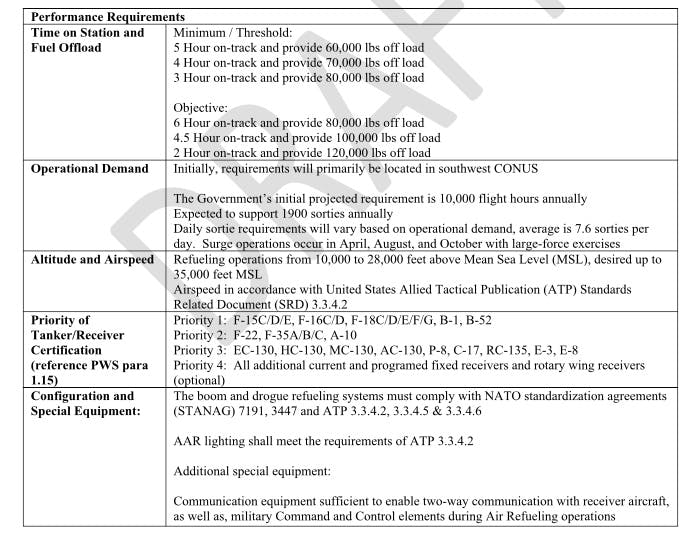
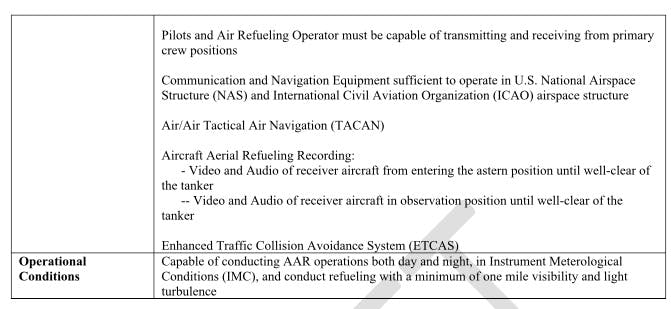
The War Zone
has written extensively in the past about the potential savings and operational benefits that could be had from shifting various non-combat aerial refueling tasks to contractors. Private companies certainly see a market emerging, too, with Omega Air recently acquiring its first boom-equipped tanker, which would allow it to support U.S. Air Force aircraft, and Lockheed Martin and Airbus announcing a partnership last year that included plans for offering new tanker leasing and contractor-operated tanker services in the United States.
As The War Zone has noted in the past, it might even be possible for the Air Force to divest some or all of its KC-10 fleet straight into the hands of private companies, who could then operate them on a contract basis. The tanker that Omega Air just obtained is an ex-Royal Netherlands Air Force KDC-10 that is very similar to the Extender. Other boom-equipped tanker fleets, including KC-135Rs that other air forces around the world are retiring now, could also be options to build these private fleets.
“We are taking a look at that,” Lyons said of contractor aerial refueling at the Atlantic Council event, despite his stated reticence to the idea. It’s “worth a look” he added.
If delays and other troubles with the KC-46A persist, whatever officers such as Lyons may think of employing contractors, there may be few better choices available to make for remediating potentially critical shortfalls in aerial refueling tanker capacity.
Contact the author: joe@thedrive.com
